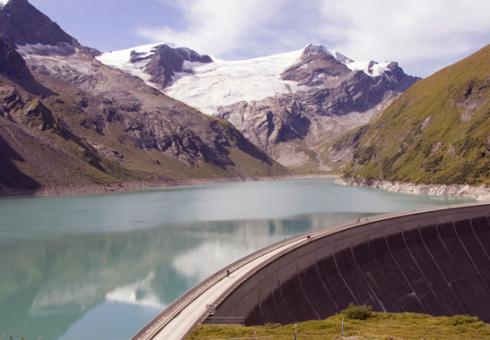News and Outreach: Charles Fant
BusinessGreen -- Latest Energy and Climate Outlook predicts world on track for temperature increases of 3.3C to 5.6C this century, presenting huge challenge to global economy
by BusinessGreen staff
MIT has added its voice to the cacophony of scientific institutions presenting warnings on the true scale of projected climate impacts, with the publication of a new report arguing we are currently on track to far exceed the 2C temperature goal set by the international community.
The 2014 Energy and Climate Outlook, published earlier this week, predicts that based on current emission reduction commitments the world is likely to see temperature increases of 3.3C to 5.6C by the end of the century, well above the 2C mark that scientists have warned could trigger "dangerous" levels of irreversible climate change.
"Our world is rapidly changing," said John Reilly, co-director of the MIT Joint Program and a coauthor of the report, in a statement. "We need to understand the nature of the risks we're facing so we can prepare for them."
The report also modelled scenarios where world leaders agree a deal at next year's Paris Summit to curb emissions, but it warned that even with ambitious new commitments to curb emissions post 2020 the world was still likely to release enough greenhouse gases into the atmosphere by 2040 to make it unlikely that the 2C goal will be met.
"There is some uncertainty associated with these estimates," said Erwan Monier, a research scientist at the Joint Program and a coauthor of the report, in a statement. "The fact is that there is uncertainty about future emissions, and also in the climate's response to those emissions. Yet, it is clear that we are not meeting the 2C target based on current efforts alone."
In addition, the report recognises that clean technologies will make "some headway", but it predicts the global energy system will continue to be dominated by fossil fuels in the coming decades as global energy use doubles by 2050.
"Population and economic growth are key drivers of change," said Reilly. "Developing countries like China and India are growing fast, and will play a big role in future emissions. They're also facing the unique challenge of trying to plan for this growth under a changing climate."
The report highlights the scale of the climate adaptation challenge faced by political and business leaders, and warns that disruption to water supplies could present a particularly acute risk to future economic development.
It predicts that rising temperatures will lead to a net increase in freshwater supplies of around 15 per cent this century as the hydrological cycle accelerates. But it also expects global water demand to increase 19 per cent, leading to increased water stress.
In addition, it predicts that higher temperatures could lead to significant changes in the distribution of precipitation and the timing of rainy seasons, posing a threat to growing seasons.
"These pressures on water will mean increased focus on making sure there is enough water where and when it is needed," said Charles Fant, a postdoctoral associate at the Joint Program and a coauthor of the report. "This can be done by transporting water to where it is needed, building more storage, or conservation and efficiency efforts."
The report came as the UK's Met Office this week confirmed that it expects this September to by the driest since records began in 1910, with exceptionally low rainfall for many parts of the country. It is also likely to finish in the top five warmest Septembers on record, with UK mean temperatures significantly above the monthly average.


